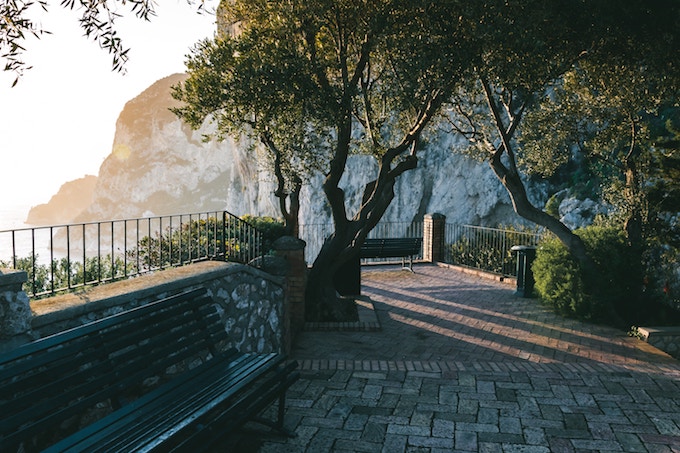If you’re looking to explore Southeast Asia, Malaysia is a multicultural paradise that offers everything from tropical beaches and lush greenery to towering skyscrapers and bustling city life. Here’s our guide on how to experience Malaysia’s best sights, sounds, and eats in one week.
Kuala Lumpur
Simply called KL by locals, the capital city of Malaysia boasts a beautiful skyline combining steel skyscrapers, colonial architecture, and old-town charm. If you’re arriving at Kuala Lumpur International Airport, the city centre is just a one-hour train or taxi ride away.
Day 1: Discover Chinatown’s Petaling Street
Kick off your week in the capital city’s ever-bustling Chinatown. The main area, Petaling Street, is a well-known bargain hunter’s paradise. Endless stalls offer everything from herbs and handicraft goods to incredible knockoffs. Petaling Street is also called “Chee Cheong Kai” (Starch Factory Street), referring to the district’s historical connection to tapioca production.
At night, Petaling Street transforms into a cramped but

Day 2: Explore KL’s iconic landmarks
Kuala Lumpur is no stranger to iconic landmarks. In fact, the city’s skyline is home to two distinct towers with architectural heritage inspired by Islamic motifs: KL Tower and the Petronas Twin Towers.
KL Tower—the 7th-tallest freestanding tower in the world—features a revolving restaurant, a glass-bottom Sky Box and an open observation deck with stunning 360 views of the city. For adults, entry to KL Tower costs RM 49 (16 CAD). Nearby are the Petronas Twin Towers, the world’s tallest twin towers and arguably KL’s most famous landmark. This 88-storey twin structure is linked at the 41st and 42nd floors by a unique double-decker Sky Bridge. There is also a stunning observation deck, where visitors can get panoramic views of the city for RM 80 (25 CAD) per adult.
To experience the best of both landmarks, visit the KL Tower during the day for a better and cheaper view overlooking the city. Spend some time exploring the city’s largest shopping centre, Suria KLCC—located at the foot of the Twin Towers—before ending your night with the illuminated sights of the Petronas behind the free Lake Symphony Light and Sound Water Fountain Show.
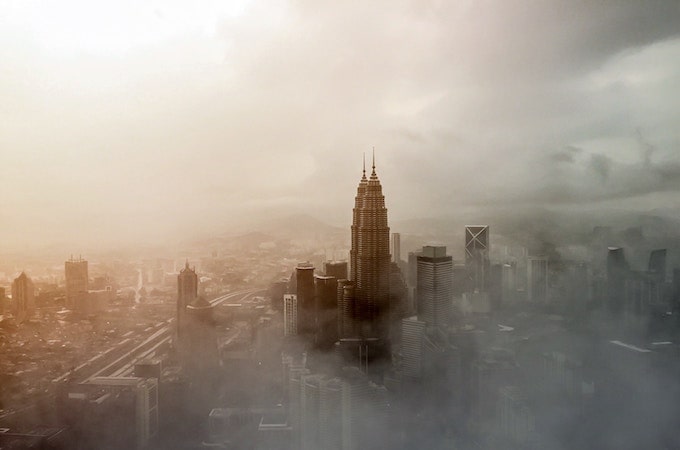
Other iconic landmarks include:
- Kuala Lumpur Railway Station
- Sultan Abdul Samad Building (Merdeka Square)
- Putra Mosque
- Masjid Negara (National Mosque)
Day 3: Climb up the Batu Caves
Located about 50 minutes outside of KL’s city centre, the Batu Caves are an important Hindu landmark and must-see tourist attraction. Luckily, getting there is extremely easy, either by taxi or train. From KL Sentral Station, a one-way fare to Batu Caves KTM Komuter Station is only RM 2 (less than a dollar Canadian).
The enormous limestone temple complex consists of three main caves and is said to be around 400 million years old. Approaching the caves, you’ll be greeted by a giant golden statue of Lord Murugan, the Hindu God of War. The statue leads to a steep 272-step climb up the temple and shrine, where you’ll discover the Temple Cave at the very top. With a ceiling over 300 feet high, the Temple Cave is the largest and most popular cave for good reason. It may sound daunting, but it’s definitely worth the hike. Admission to the Batu Caves is free and they are open all year round.
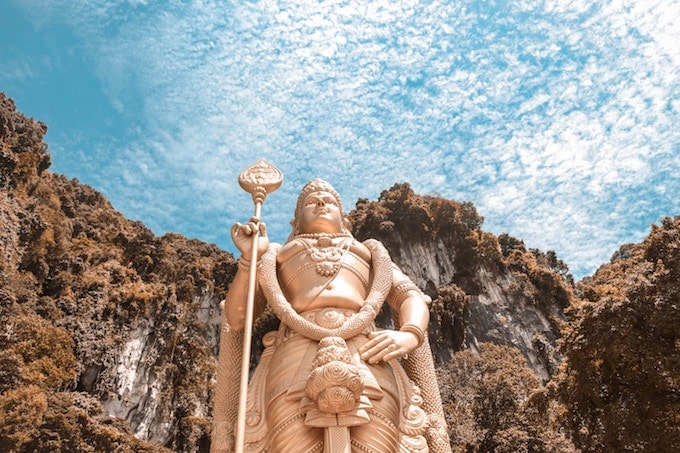
Cameron Highlands
Backpackers and locals alike are drawn to Malaysia’s incredible Cameron Highlands. Situated roughly 150 kilometers north of Kuala Lumpur, the highlands are enjoyed for their cooler climate and lush, mountainous landscape. Thankfully, the bus journey from KL is just a little under four hours and costs about RM 35 (11 CAD).
Day 4: Hike through Cameron Highlands
Start your day off at BOH Plantations, where you can get a first-hand look at how tealeaves are picked and processed, before trying local teas and desserts. If you love to hike, there are an abundance of nature trails that offer breathtaking sights along the way. Signage can be sparse, so make sure to purchase a trail map to avoid getting lost. And if hiking isn’t your thing, don’t worry. The Cameron Highlands are the largest producer of flowers and tea in Malaysia, meaning a rich sea of green will surround you no matter where you look. Just relax and take in the remarkable view.
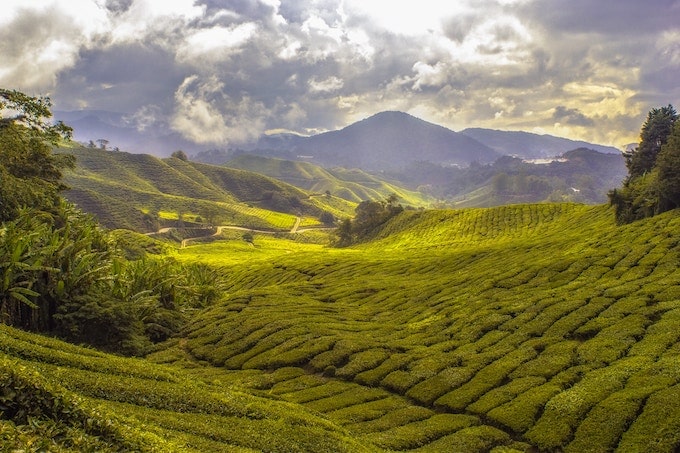
Penang Island
Situated on the northwest coast of Malaysia is Penang, one of the country’s most popular islands. Here, you’ll discover a rich heritage combined with delicious street food. Travelling from the Cameron Highlands to Penang takes about four hours by bus and costs as little as RM 30 (about 10 CAD).
Day 5: Experience Georgetown
Ask any local and they’ll tell you that Penang is most famous for its street food. Eat your way through the island’s signature noodle dishes, from Char Koay Teow and Penang Assam Laksa to Mee Goreng. Not only is the food incredibly tasty, but also it’s incredibly cheap! The best eats can be found at hawker centres and stalls, where most dishes cost no more than RM 10-20 (3-7 CAD).
Spend the afternoon wandering the charming streets of Georgetown, a well-known UNESCO World Heritage Site synonymous with Penang. Uncover an eclectic mix of modern and traditional colonial architecture, with creative murals and graffiti scattered throughout. The area is also home to the Clan Jetties of Penang, floating settlements created by Chinese immigrants who shared the same historical origin and surname. Step back in time with a leisurely stroll through Chew Jetty and enjoy a picturesque waterfront sunset.
End your day in Georgetown with a unique night out at of Penang’s many speakeasy and hidden bars, such as Golden Shower, Secret Door, or Magazine 63.
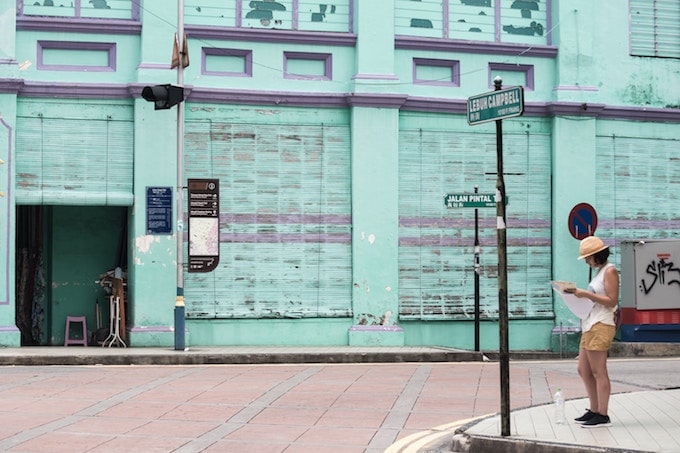
Day 6: Tour Kek Lok Si Temple & Penang Hill
Set atop the slopes of Air Itam is Kek Lok Si Temple, Malaysia’s largest Buddhist temple founded over 100 years ago. This magnificent temple complex is filled with exquisite gardens, striking monasteries, prayer halls,
Nearby is Penang Hill, one of the city’s best-known tourist attractions located 821 meters above sea level. To get to the top, you’ll have to hop on the Penang Hill Funicular Railway—one of the steepest and longest tunnel tracks in the world. A standard round-trip ticket is RM 30 (about $10 CAD) per person, or slightly more for the express lane. On a clear day, take in the surrounding mountains and entire city from above. On a clear night, enjoy a panoramic view of the city lit up in all its glory.
Day 7: Enjoy Batu Ferringhi’s beaches
On your last day, unwind at Batu Ferringhi Beach, a stunning stretch of soft sand just 30-40 minute north of Georgetown by car. There are plenty of water activities available, from parasailing and jet skiing to hopping on a banana boat ride. But be warned, there are plenty of jellyfish lurking in the waters, so keep an eye out if you decide to go for a swim. Come sunset, nearby streets are lined with shopping stalls selling everything from handicraft items and cheap clothing to eclectic souvenirs—just remember to haggle!
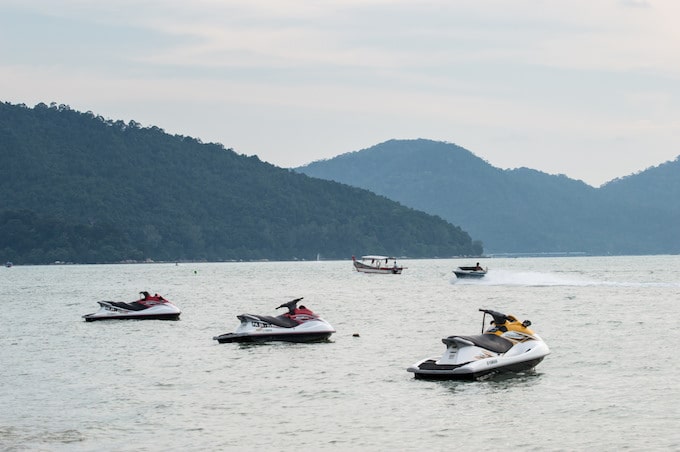
The best time to visit
While the weather is generally hot and humid year-round, there is a clear split between the east and west coast when it comes to monsoon season. The west coast islands near Penang enjoy drier weather from December to April, while the east coast islands enjoy drier weather April to October. It rains almost daily in the lowlands where Kuala Lumpur and the Cameron Highlands, so there isn’t much of a difference between dry and wet season.
From its vibrant heritage and multiculturalism to its magnificent landscapes, Malaysia is a must-see country when exploring Southeast Asia.
Have you been to Malaysia? Where did you visit? Share your highlights in the comments below!

